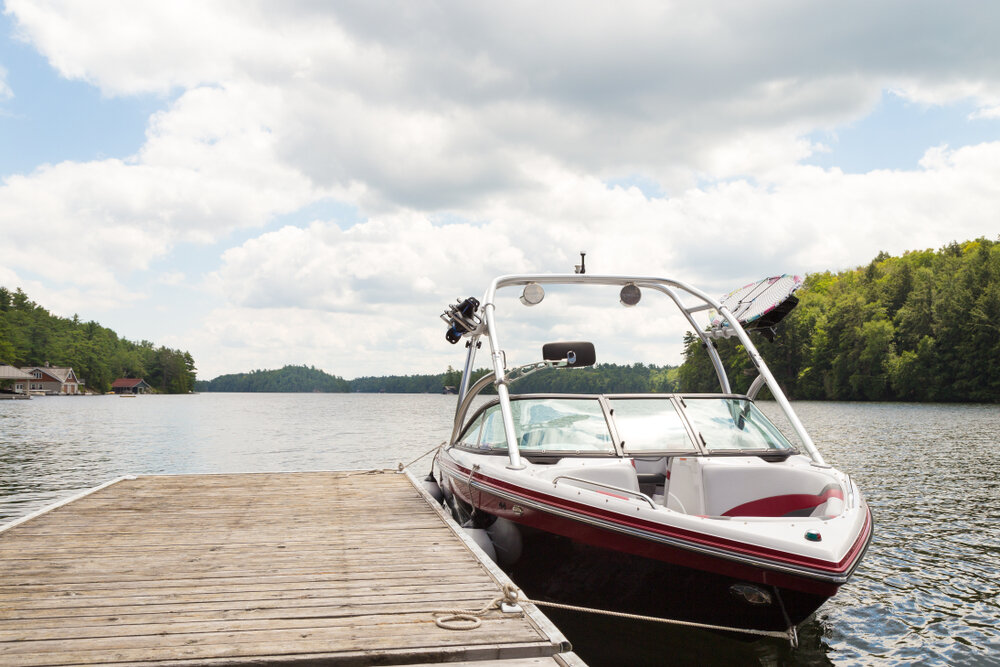Call: 1-800-832-7191
Docking Tips for Boaters

Mastering the Art of Coming Ashore and Docking
Docking tips for boaters can be extremely helpful. Docking a boat can be one of the most stressful parts of boating—especially when the wind picks up, the current shifts, or there’s a crowd watching. But with the right techniques and a calm mindset, docking can become a smooth and confident maneuver. Whether you’re a new boater or a seasoned captain looking to refine your skills, these tips will help you dock like a pro.
1. Prepare for docking Before You Approach
Before you even get close to the dock:
- Assign roles to your crew so everyone knows what to do.
- Have lines and fenders ready on the correct side of the boat.
- Check wind and current direction to anticipate how your boat will behave.
Preparation is key to avoiding last-minute scrambles and potential damage.
2. Go Slow—Really Slow…probably the best tip
The golden rule of docking: never approach the dock faster than you’re willing to hit it. Use short bursts of throttle to maintain control, and let momentum carry you in. Slower speeds give you more time to react and adjust.
3. Use the Wind and Current to Your Advantage
- If the wind or current is pushing you toward the dock, approach at a shallow angle and let it help you.
- If it’s pushing you away, come in at a steeper angle and use reverse to stop and pivot.
Understanding how your boat reacts in different conditions is crucial for smooth docking.
4. Boaters: Practice the Pivot
Most boats pivot around a point about one-third from the bow. Use this to your advantage:
- Shift between forward and reverse while turning the wheel to spin the boat in place.
- Practice this maneuver in open water to get a feel for how your boat responds.
5. Communicate Clearly
Use hand signals or pre-agreed commands with your crew. Yelling instructions at the last second can lead to confusion and mistakes. Calm, clear communication ensures everyone is on the same page.
6. Use Spring Lines for Control
Spring lines can help you control the boat’s movement along the dock:
- Forward spring line: prevents the boat from moving forward.
- Aft spring line: prevents it from moving backward.
Use them to pivot the boat into position or hold it steady in wind or current.
7. Practice Makes Perfect
Like any skill, docking gets easier with practice. Try docking in different conditions, at different docks, and with different crew members. The more you do it, the more confident and capable you’ll become.
Tying Off the Boat: Securing Your Docking Job
Done with docking tips for boaters. Let’s move on to tying off the boat. Once your boat is safely alongside the dock, the final step is just as important—tying off properly. A secure tie ensures your boat stays put, even if the wind picks up or the tide changes. Here’s how to do it right:
1. When tying off, use the Right Knots
The most common and reliable knot for docking is the cleat hitch. It’s quick to tie, easy to adjust, and holds strong. Here’s how to tie one:
- Wrap the line around the base of the cleat.
- Make a figure-eight over the cleat horns.
- Finish with a loop under the last wrap to lock it in place.
Practice this knot until it becomes second nature.
2. Secure the Boat with the Right Lines
Use a combination of lines to keep your boat stable:
- Bow line: Runs from the bow to the dock, keeping the front of the boat in place.
- Stern line: Runs from the stern to the dock, securing the back.
- Spring lines: Run diagonally from the boat to the dock to prevent forward and backward movement.
Adjust the tension on each line to keep the boat snug against the dock without putting too much strain on any one point.
3. Check for Chafing and Slack
- Use chafing gear or wrap towels around lines where they rub against the boat or dock.
- Leave a little slack in the lines if tides or water levels change, but not so much that the boat can drift too far.
4. Double-Check Everything
Before leaving your boat:
- Make sure all lines are secure and cleats are properly tied.
- Confirm fenders are in place to protect the hull.
- Take a final look to ensure the boat is stable and won’t shift unexpectedly.
Final Thoughts
Docking doesn’t have to be a nerve-wracking experience. With preparation, patience, and practice, you can make every landing a smooth one. Here is an article from the US Coast Guard on docking. Remember: even the best captains have off days—what matters most is staying calm and learning from each experience.
Did you enjoy this blog? Visit all of our blogs on the Blog Page of our website.
